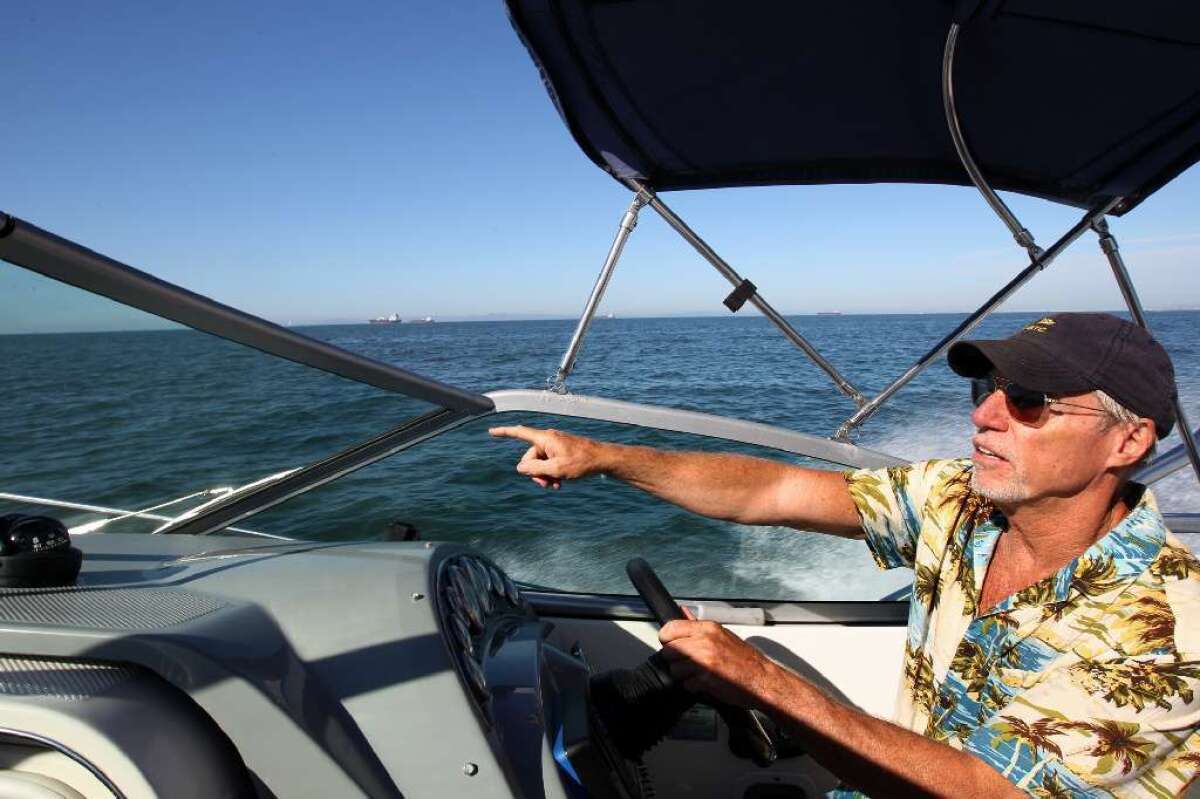California panel approves first shellfish ranch in federal waters

- Share via
The California Coastal Commission has approved development of the first shellfish ranch in federal waters, a 100-acre underwater plot for cultivating and harvesting about 2.6 million pounds of Mediterranean mussels a year.
“It’s quite an achievement and I’m pretty happy about it,” Philip Cruver, president and director of Catalina Sea Ranch, said about the commission’s unanimous vote Wednesday. “But I always knew it would happen because of the demand.”
Catalina Sea Ranch’s business strategy is in line with the National Oceanic and Atmospheric Administration’s aim to create jobs, provide highly nutritional food and improve the marine environment by putting more shellfish back in U.S. waters.
Cruver’s goal is to reduce the nation’s $10-billion seafood deficit by cultivating and promoting a brand of shellfish that would appeal to the growing green market of environmentally conscious consumers seeking to eat locally produced seafood. He also hopes to satisfy China’s growing market for frozen mussels.
Ranching water-siphoning mussels, oysters and scallops would help clean seawater as they filter microscopic plankton from the ocean to feed themselves, Cruver said.
Cruver says shellfish cultivated in the open ocean would produce higher growth rates, better yields and heavier crop production than inshore farms. That is because upwelling waters at the ranch site about 9.5 miles offshore of Long Beach would provide a constant food supply with no tidal down time.
In addition, the shellfish would mature in deep water and swift currents, avoiding infestation by parasites found in shallow bays and estuaries.
Then, too, the Southern California Bight is free of hurricanes, which have hammered the shellfish industry in recent years in the Gulf of Mexico and along the Eastern Seaboard.
Of particular concern to environmentalists and commission scientists were potential effects on fisheries and habitat resulting from marine debris, ship strikes and entanglement of whales, dolphins, porpoises, sea turtles and sea birds. However, commission scientists determined that that the project appeared flexible enough to adapt to contingencies.
Catalina Sea Ranch plans to build 40 longlines -- each 689 feet long and 100 feet apart -- for seeding beyond the 3-nautical-mile boundary of California state waters.
Coast Guard-approved buoys equipped with battery-powered lights will be used to suspend the longlines 30 feet beneath the surface, well out of the way of commercial and recreational boaters.
The company’s office and harvesting vessel is the 110-ton trawler Captain Jack, which is berthed at dock space leased at the Southern California Marine Institute in the Port of Los Angeles. The institute’s seawater filtration system will be used for a shellfish nursery, already under construction.
Company scientists will regularly conduct state-required tests of site waters for purity and bacteria, Cruver said. Tissue analysis of shellfish for chemicals and toxic metals will also be conducted before any are sold for human consumption, he said.
“Under ideal circumstances,” Cruver said, “we would plant in March or April and expect a first harvest of about 200,000 pounds of mussels by the end of the year.”
In the meantime, the company is developing a selective breeding program in collaboration with scientists at the USC and Cal State Long Beach. It is also working with researchers at the UC Davis’ Bodega Marine Laboratory on a project to cultivate California rock scallops as a high-value crop for offshore shellfish aquaculture.







